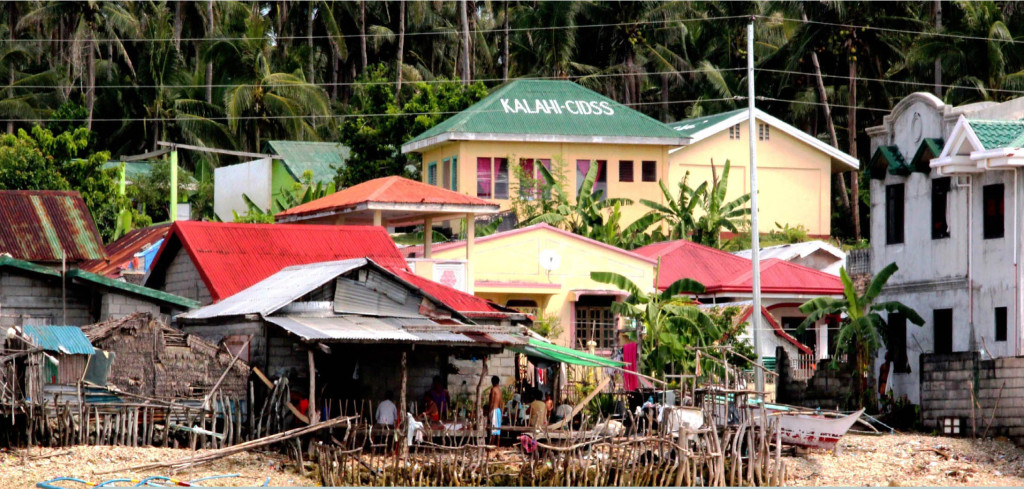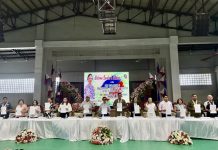
LAOANG, Northern Samar- Geographically speaking, Laoang is composed of barangays from the mainland and two islands facing the Pacific and is located at the eastern side of the province of Northern Samar that makes the area vulnerable to typhoons and strong monsoons.
But Laoang is not just a constant target of storms. Like any other towns in the Philippines, it is also stormed by unvarying poverty. This is the main reason why Laoang is one of the early recipients of the Kalahi-CIDSS or Kapit-Bisig sa Kahirapan–Comprehensive and Integrated Delivery of Social Services- a poverty alleviation program implemented by the Department of Social Welfare and Development (DSWD) in Eastern Visayas.
Laoang started its Kalahi-CIDSS implementation in November 12, 2006 completing three cycles as a partner implementer of Kalahi-CIDSS: Kapangyarihan at Kaunlaran sa Barangay until 2010. This was followed by Kalahi-CIDSS Makamasang Tugon Community-Driven Development (CDD) Local Policy Planning and Harmonization Project from 2010 until 2012. The Makamasang Tugon is another Kalahi-CIDSS modality wherein good performing LGUs implementing the said program are given incentives to institutionalize the CDD mechanism and were granted additional funds for the purpose.
An additional grant project was also given to Laoang from the Australian Agency for International Development (AusAid) now dubbed as the Australian Department of Foreign Affairs and Trade (DFAT) grant in 2013 up to this year. With the implementation of Kalahi-CIDSS, sub-projects like farm-to-market roads, bridges, water supply systems, drainage canals, school buildings, and day care centers were successfully constructed in the municipality, answering the most pressing needs of its residents.
Carmelita Notarte, a day care worker in Barangay Sto. Niño, describes the program as a champion. Because of the grant received from the AusAID, the community has already a center for little kids ready for pre-elementary learning. “Now, learning with children is a lot easier because of the more conducive classroom. The enrollment rate is higher than the usual because more kids want a day care center with complete facilities,” Notarte said.
The municipal government of Laoang has developed and institutionalized the framework of the municipal implementation plan of Kalahi-CIDSS through Municipal Ordinance no. 130 in 2010 creating the Community-Driven Development Center under the Office of the Municipal Mayor. It is competently managed by the municipal coordinating team.
According to Mayor Madeleine Ong, the CDD institutionalization is their way of bridging leadership for citizens’ meaningful participation in local governance and development. “For us, this means strengthening the roles and functions of the municipal and barangay officials in tandem with civil society organizations (NGOs, People’s and Community-based organizations) in applying the principles of broader participation, greater transparency and public accountability in local development planning, budgeting, implementation and performance monitoring and evaluation,” she said.
With the CDD institutionalization, the local government of Laoang has also reconstituted the Expanded Municipal Development Council (E-MDC), making the Kalahi-CIDSS’ barangay project management committee chairpersons as voting members along with their barangay chairmen. Likewise, the Expanded Barangay Development Councils (E-BDCs) was reconstructed designating the Kalahi-CIDSS’ BSPMC chairpersons as vice chairpersons of the barangay chairmen.
The municipality has also reformed the Expanded Local Poverty Reduction Action Team (LPRAT) with voting representations from the Kalahi-CIDSS’ BSPMC, parent-leaders of the Pantawid Pamilyang Pilipino Program, basic sector organizations and civil society organizations. “The trajectory of Laoang’s governance and development work is towards building self-reliant and self-propelling families and communities,” Mayor Ong said.
Cahayagan, an island barangay of Laoang, is a proof that CDD could be a tool against catastrophes.
“Since people are already used to assemblies, it was not difficult to convene them for an urgent meeting before the typhoon hits. When you tell them to evacuate, they will evacuate immediately, no more arguments]”, BSPMC chairperson Vivian Serbito explained. Through the Kalahi-CIDSS, Cahayagan was able to construct a two-unit school building and a day care center which still stand proud after the coming of super typhoons. When asked if they were afraid that their project would get destroyed during the onslaught of the series of typhoons that hit Eastern Visayas, Vivian proudly answered, “We were very confident that the school would not get destroyed because we constructed it. We all helped during the planning stage. In fact, the school building was designed not to face the strong winds during rainy seasons. That is why it is unharmed”.
Cahayagan’s sub-project is a national awardee in 2012 on Best Practice in Social and Environment Safeguard under the grant of the Australian Department of Foreign Affairs and Trade (DFAT) In her speech during the awarding ceremony of the 1st Bayani Ka! Awards, Mayor Ong emphasized that the local government unit of Laoang has always been directed by the time-honored dictum that Public Office is a Public Trust. “The people of Laoang have been guided by this primordial leadership principle which is anchored on the servant-leadership notion inspired by Jesus Christ’s declaration I come to serve and not to be served.”
The Bayani Ka! Award is a recognition given by the DSWD through Kalahi-CIDSS for the hard work and dedication done by program supporters including LGUs for their active role in promoting CDD. Laoang bagged the award for improved local governance besting other LGUs across the county. According to Ong, if there is one lesson the people of Laoang learned, it is the power of community-spirit and solidarity among different people that can weather any storm or tragedy. Clearly, any circumstance is bearable when people work together and this has always been instilled in the hearts and minds of the locals.
“As a servant-leader, we have crafted a catchy banner called ‘Magburublig Kita!’ or Let us work together! This has been an inspiring and encompassing covenant in reaching out to our people. This is our own way of mobilizing our people into sharing whatever they have to the least, the last and the lost”, Mayor Ong gloriously declared.
With the scaling up of Kalahi-CIDSS into NCDDP or National Community-Driven and Development Program, the program is covering 136 municipalities in Eastern Visayas with a target of 2, 176 sub-projects focusing on rehabilitation to be implemented this year. In 2014 alone, Laoang received P 23.4 million for community infrastructure that will provide basic social services to the public. DFAT and Kalahi-CIDSS on the other hand, is currently implementing 24 sub-projects in Northern Samar which are mostly day care centers and school buildings.
(JENN CASPE PAA)



